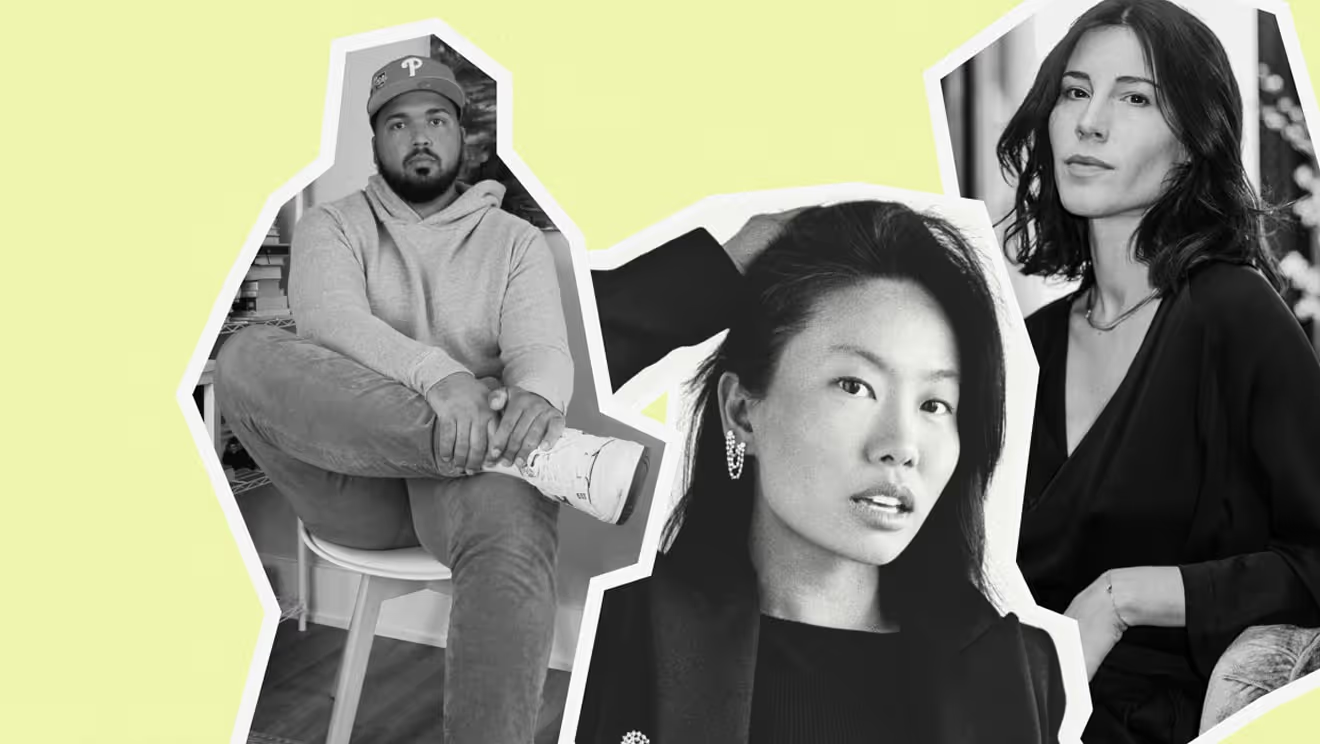As the Co-Founder and Creative Director of leading design studio Studio Institute, and Co-Founder of Mezcal Rosaluna, Nate is harnessing his experience to create and amplify impactful brands of all shapes and sizes. Our Brand Marketing Lead, Maria Beer, had the pleasure of chatting with Nate about creative direction and brand DNA, getting his take on the power of a brand’s sense of self. Here’s a glimpse into their conversation.
MB: Hi Nate, so excited to chat! Starting at the beginning, I’m curious about your process — where do you start with brand positioning and where does creative direction fit into that?
NB: I love that question. Everything that we do on both the client side and the brand side starts with storytelling and narrative. Creative direction is really like the patina on top.
For me, the importance of positioning is dependent on the brand. For brands that have a very clear story and sense of self, positioning is almost automatic. The answers to questions like, "Should we be here? Will that align with what we believe in?” come seamlessly. For larger organizations where the brand story may have faded or become unfocused over time, the act of going through a positioning exercise can certainly be worthwhile. Asking questions like, “Is what we believed in still relevant to who we are today?” is integral — brands change and people change. Sometimes you’ll find that you aren’t where you thought you were going to be, and positioning needs to change — that’s when it’s time to ask, “Where do we visualize ourselves?” and begin to build a story and strategy to get there.
MB: Those questions are so valuable. You mentioned starting with narrative, Studio Institute values storytelling in a big way when building a brand. How does your role differ when creating a brand story vs. amplifying one?
NB: Storytelling is a big part of what we do. The process of building vs. amplifying is relatively similar — either way, at the end of the day we’re working to reveal a brand’s truth and identity — however, in each case, our role is different. For a brand that has a very clear sense of self, we’re acting as a steward to broadcast that. For a younger brand, particularly a startup, we’re helping to articulate the vision of a founder and turn what's in their head into a clear sense of identity, both on paper and in the real world.
Despite those differences in role, when working with founders and leaders to define or amplify their brand our through-line is empathy. It’s really important to understand the feelings of the client — I think clients don't always get that enough, whether they are a young brand just starting, or a larger organization who may have “forgotten how to play” and want to be nimble again.

MB: I love that — such good advice. Speaking of helping larger brands stay nimble, how do you approach helping brands keep up with what’s trending while also staying true to their story?
NB: That's funny, I was talking to my designer about that yesterday. I like to think of trends like this: the cut of the denim changes from time to time, that's always going to happen, but that doesn’t mean you have to throw out all your other jeans — meaning, you can adapt to remain relevant without changing who you are. For brands, in order to strike that balance, it’s less about tapping into the latest trend cycle and more about evolving with the changing state of the world at any given time.
Ultimately, that comes from a place of having a strong sense of self. If you have a strong center, you're less apt to change without sense. For brands, that identity is critical, it allows us to help them evolve in a way that makes sense for them and their audience — and in a way that doesn't look like they’re simply jumping on a bandwagon. You see this mistake often in the quickly changing state of social media; brands will jump on a trend because they'll be convinced that it'll give them some level of virality, and it will fall short because that brand doesn’t normally speak or present that way — ultimately not resonating with their audience.
MB: So important, it all comes back to that foundation. I have to tell you, I love your TikTok content, and I recently saw you talk a bit about cohesion in branding across multi-channel campaigns. With the new year coming up, a lot of brands on Breef are diving into those multi-channel campaigns, so I’m curious, what's your perspective on prioritizing cohesion in storytelling across channels vs. having exciting moments that are unique to each channel — any tips to balance the two?
NB: Definitely — I think that you can have one cohesive message said in a few different ways. If you're a music nerd like me, you'll talk about an artist you like with someone who’s also a music nerd differently than with someone who isn't. That doesn't mean you're saying to person A, “I like this specific artist” and to person B, “I don't like this specific artist,” you're saying to person A, “I like this artist for this specific reason that you'd understand,” vs. to person B, “you've never heard of this artist, so I'm going to introduce them to you in a slightly different way.” Both conversations will be had with the same level of truth and conviction. This idea can be applied to the nuanced audiences that a brand has on each channel — delivery might change depending on the channel and audience, but the message remains the same.

MB: I love that analogy for adjusting the delivery of a cohesive message. Lastly, with the holiday season here, do you have any tips for end-of-year marketing?
NB: End-of-year is a great time to focus on your real die-hard consumers. The level of campaign noise is almost as if your audience is sitting at a loud bar, so they can only talk to one or two people. The holidays can be misleading for a lot of brands — there can be mismanagement of expectations. There's so much consumerism that happens, so naturally for brands, they’ll think, “This is the moment to introduce new people to our product and expand our message.” I think it should be the opposite — it’s a time to focus on your core consumer.









